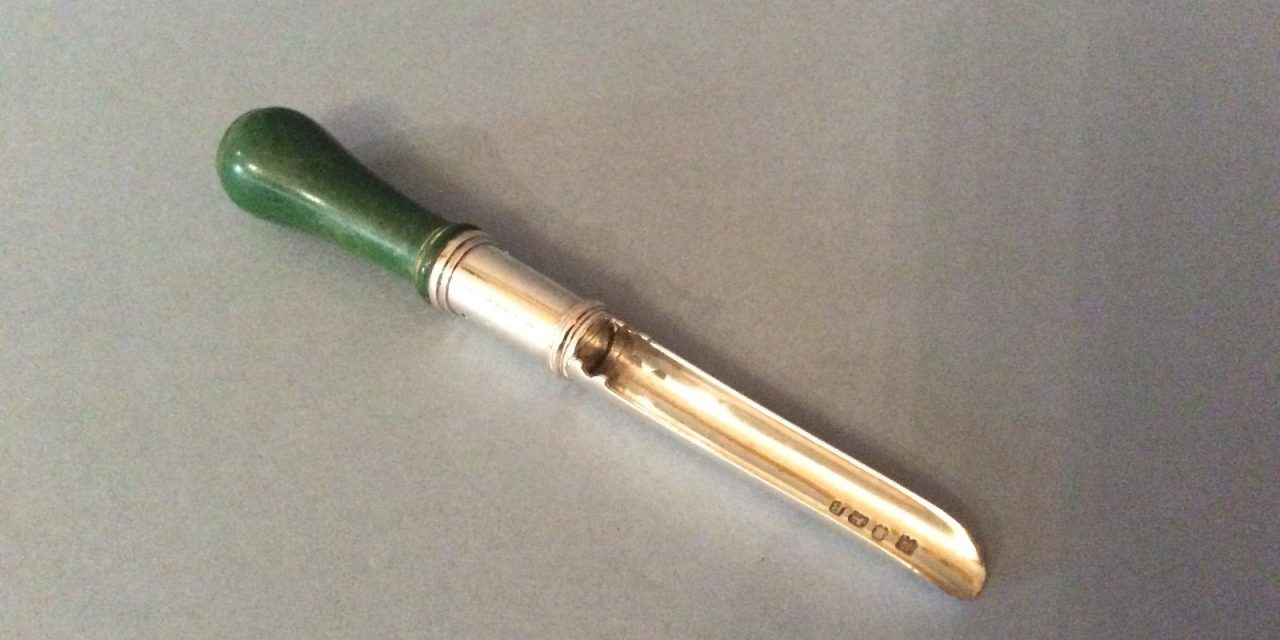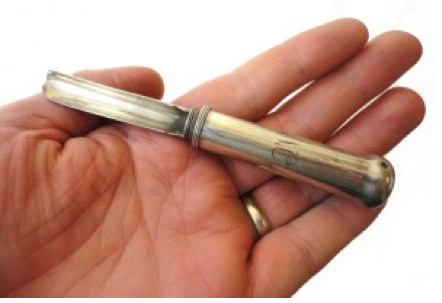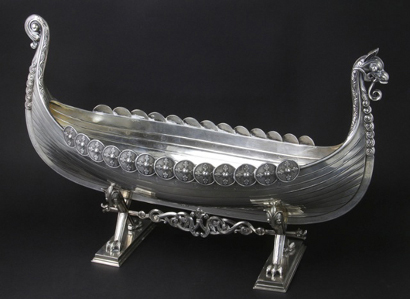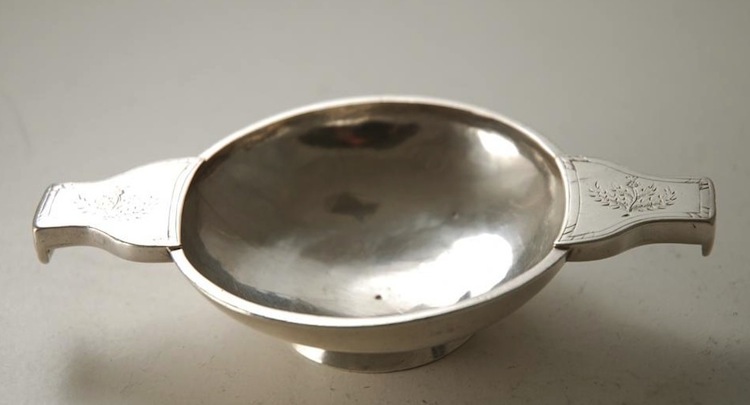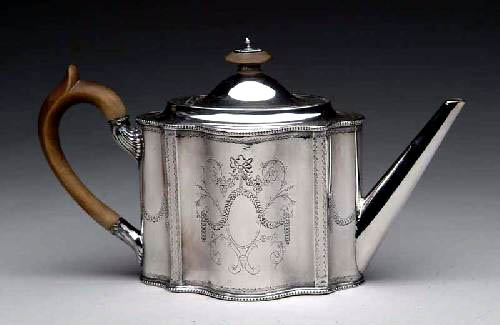One of the reasons why people specialise in silver is that the study of such is often associated with the object rather than the maker.
Whereas some enthusiasts become incredibly focused on Dr Wall period Worcester, or 18th century Meissen Kandler figures, for example, the study of silver is more commonly associated with the design of an object rather than the designer, thus you become involved in the evolution of design. Neither study is wrong, but contextually speaking you get a broader overview with the later and a narrower with the former.
Silver apple corers are favourite objects, mostly because although their form is so evident and practical when you have seen another, yet at first they can appear quite alien. From 1680 to 1820 when they flourished their form changed only slightly are the ultimate dignified gentleman’s companion.
When they first appeared in the 1680’s they were formed from a long cylinder of silver, cut away at the halfway mark to form a scallop shaped cutting blade and are around 10 to 15cm (see first image). Some rare examples have a compartment at the end where spice may have been kept. As is typical with such early silver, a maker’s mark struck on the dividing plate is the only mark you are likely to find (although fully marked examples are very desirable).
Georgian Silver Apple Corer
Probably owing to the impractical nature of carrying a 15cm cylinder of silver in your pocket (the reasons so few survive?), the design changed in the 1750’s to a more ergonomic design. In these corers (the most common) the blade unscrews when not in use and is stored inside the handle (see image above). This form became increasingly popular at the end of the century as a picnic accessory (obviously!).
From 1792 fully marked examples are more common (typically London or Birmingham) and with their increase in popularity so came more exotic handles (shagreen, ivory, bone etc). After 1820 they fell quickly from fashion (after all, who needs a silver apple corer?!), therefore corers marked later than this are not as popular nor valuable.
Below is an overview of the values of the aforementioned corers, outlining trends rather than rules.
Circa 1680 (cylinder), fully marked £1000+
George III + combined knife £300-400
George III silver handle (as photographed above) £200-400
George III ‘exotic’ handle or later than GIII £100-200

